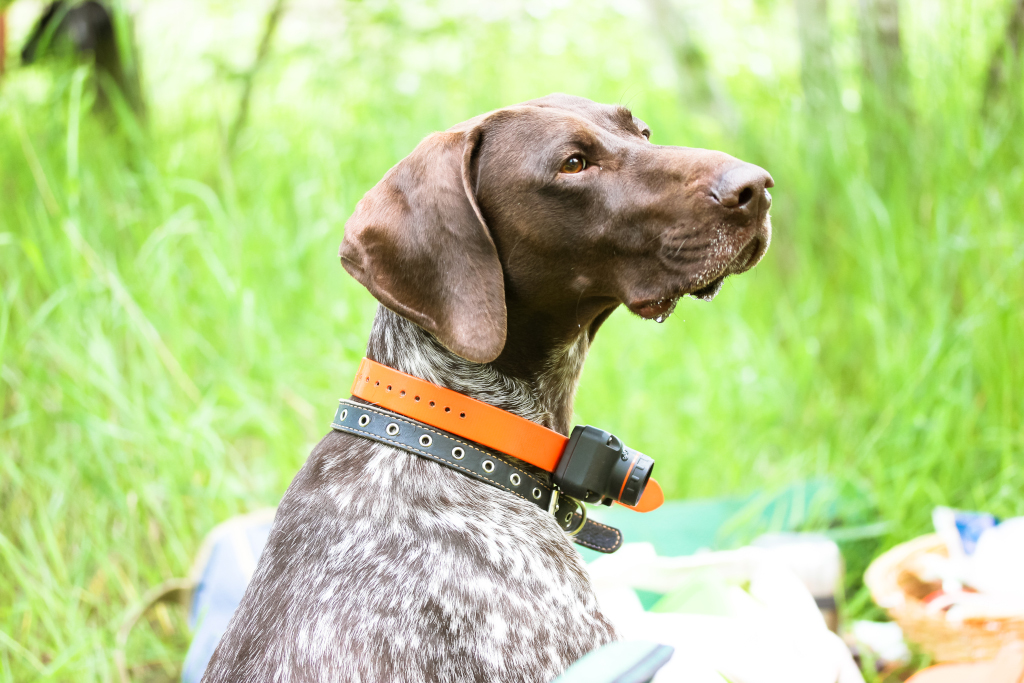The first thing that came to most dog owners’ minds when they heard about dog shock collars, also known as remote training collars or e-collars, is that it’s cruel to dogs. It hurts dogs, and they don’t like it.
Now, that’s totally understandable, as I was once one of those people who are against the use of shock collars to train dogs, and they are somewhat controversial. Plus, these devices do sound a bit intimidating, and they’ve always been portrayed as cruel or torture devices designed to inflict pain.
The truth, however, isn’t as simple as what people perceive it to be.
I’ve learned how they work and had my own experience with shock collars. So now I am here to share my thoughts.
Shock Collars - A Cruel, Inhumane Dog Training Tool?

Like most people, when I first hear about shock collars, I picture these devices delivering electric shocks to dogs that make them cringe, and I immediately judge it as an inhumane training tool.
To me, the fact that an electric shock is involved automatically meant that something terrible was going to happen to the dog who was wearing one. It sounded like a torture device, and I thought it would definitely cause harm and be cruel to dogs.
But I was proven wrong.
It all started with my German Shepherd, Ginger. I brought her home as a puppy 12 years ago, and she was only two months old when we got her. I had little experience with dogs until Ginger joined our family, and she’s just like any pup, eager to learn and always wanted to play. Fast forward a few months, she turned out to be a handful who dug through trash bins, climbed fences, chewed up everything in sight, and didn’t listen when called.
What’s worse? She would try to dash out of the house every time I opened the door, chase after cars, jump on people, bark non-stop, start to show aggressive behavior, and I was afraid that she might become out of control and bite someone one day. I had a hard time handling her and tried everything to stop her from doing what she shouldn’t do, but all of my efforts failed. And I was so frustrated to the point that I would just cry and be at my wits’ end.
Introducing Shock Collars for Dogs
I don’t want to give up on my dog, and I know I need to do something to bring Ginger back to being a good girl.
Needless to say, she was a lot of work, and I really needed help with correcting her unwanted behavior. So I decided to turn to dog trainers for help, and as you may have guessed, the trainer suggested that I use a shock collar to train Ginger.
I’ll admit I was skeptical at first, thinking it would be nothing more than torture for my pup. But the trainer explained how shock collars work, reassured me that they wouldn’t hurt my dog if used correctly, and even tested that on both himself and me. I’ve tried other options, which don’t work, desperate, and on the edge of giving up, I decided to give it a shot.
The results? Almost instantaneously, Ginger started to follow what I asked her to, and it was like she became a different dog. She no longer jumps, barks non-stop, or chases after cars. Of course, there are still minor mistakes at first, but I can manage her way better than before, and the behavior problems that were once terrible got solved pretty much.
And what amazes me more than Ginger’s transformation was how things turned out to be even after we stopped using the collar, which is about a year later. Well-behaved, reliable, relaxed, and calm, the bond between us grew stronger after training her with e-collars. I couldn’t be any happier with how things turned out.
So Are Dog Shock Collars Cruel?
Shock collars are certainly not how the media often depict them, inhumane or torture devices that cause pain to dogs. On the contrary, these devices saved my pooch from becoming a danger to others, which may result in her being in a shelter or getting euthanized.
And I also know for sure that e-collars don’t cause any physical harm since I experienced this first hand when I tried it on myself. There is no doubt in my mind now that e-collars are one of the best dog training tools. It made me realize that dog shock collars aren’t cruel or bad for dogs but rather an effective tool in communicating expectations and correcting unwanted behaviors.
I know some people may still think that using e-collars is cruel, which I respect. But if you ask me, what is crueler is not knowing how shock collars work and allowing your dog to continue their bad habits and run the risk of them hurting someone and being put down.
How Do E-Collars work?

So how exactly do e-collars work? Whenever your dog does something unwanted, you can push the button to deliver a static stimulation, followed by a verbal cue like “come” or an action you want your dog to do instead. They will soon associate this sensation with whatever it is that they shouldn’t do.
The purpose of e-collars is to get your dog’s attention and prevent them from doing something you don’t want them to, not to cause pain or hurt them. The degree of “shock” itself is very mild. After all, how would you feel when touching something metallic, such as a doorknob, and getting a static charge? Not much, right?
The shock is simply a method of communicating with your dog to guide them back on track when needed without injuring them in any way. It’s kind of like a tap on the shoulder or reminder that “hey, this isn’t something you should do, come back.”
In fact, many hunting dogs are trained with e-collars as they allow hunters to track and communicate with their gun dogs from a distance. The same technology used in e-collars for dogs is also employed in many other dog training equipment, like invisible dog fences and dog bark collars.
But... I've Seen Dogs Yelp in Pain, Cringe, & Was Injured Using an E-Collar
Oh, but wait, I’ve seen a video of a dog yelping in pain because of the e-collar. I’ve also seen e-collars injured dogs. How can this be if the tool is designed to only get a dog’s attention?
It’s a fair point. However, there are also stories about dog collars or dog harnesses that cause injury in dogs. Does that mean collars and harnesses are bad, too, then? No, they certainly are not. These cases happen because the owner misuses the product or the product doesn’t fit the dog’s size or shape.
You get my point. The problem is not the e-collar itself but how it’s used. Sad and unfortunately, these poor pooches were hurt because of their owner’s lack of knowledge on how to operate the device properly. Many pet owners will simply put the collar on the highest setting without knowing how the tool should be used and shock their dogs when they see any unwanted behavior. And some people just abuse the device and use it for the wrong reasons.
Let me put it another way. Cars are designed to take a person from point A to point B. But if the person steps on the gas pedal so hard and slams their foot down no matter what’s in front, a serious accident will happen, and the driver will be seriously injured and hospitalized. So was it the car’s fault that the accident occurred? Does that mean cars are bad and should be banned? No, it’s not! It’s the person behind the wheel.
It’s the same for e-collars. These devices are not evil or bad on their own, but the dog owner who uses them. So don’t blame the tool just because a person did not know how to train their dog with it. It’s like saying baseball bats are bad for no reason or that chainsaws can hurt people by themselves when, in fact, they are used to achieve specific goals.
With anything, you need to know how to use something before you can safely rely on it, and it all boils down to how you use them.
The Bottom Line
E-collars are not something bad or cruel. Instead, they are an effective method of training your dog and correcting unwanted behavior.
I’m not attempting to convince anyone that using a shock collar is something they should use. Let me just say that the choice of whether to use a dog shock collar is up to you. It would be wrong for me to force my opinion on the uses of these training tools simply because it has worked for me.
This is my own experience with the device, and I only hope this article will help you better understand how it works and help you make a more informed decision if this is something you want to use on your dog.
